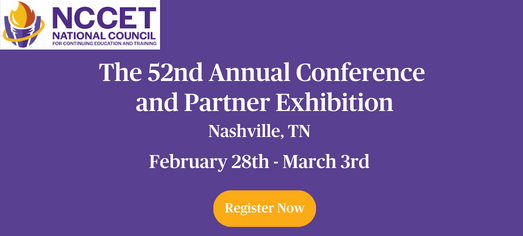Published on
Transforming Higher Ed for the Future of Work

Higher education needs to prepare learners for the workforce. Workforce alignment is key to keeping learners—and the institution—relevant. But conversations and collaboration must take place before innovation and success can happen. In this interview, Angela Long discusses the current relationship between workforce and higher ed, the impact of transformation and why higher ed leaders need to make the shift to prepare learners for the future of work.
The EvoLLLution (Evo): How would you describe the current relationship between higher ed and the workforce?
Angela Long (AL): Without question, we are living during the most extraordinary times in human history. For those working in higher education, opportunities abound, as we are the generation that must be poised to reinvent and rethink why we do what we do. We have now entered Education 5.0, with rapidly moving parts creating new innovations and technologies. Many of our top industry leaders and inventors are leading conversations on the future of work and learning. These are today’s Edisons who work for R&D labs, Amazon, Google, Microsoft and networks such as Singularity University.
The real question is: Where are our higher education community college leaders in these critical conversations? Are they pursuing opportunities to sit at the table and take part in what the future will hold for the next generation? Because what we know is that, whether we like it or not and whether we are ready or not, these major tech companies and industry leaders are moving forward without us. For example, Chat GPT is taking education by storm. How is higher education addressing this type of innovation? The relationship between these innovators and those in higher education who provide workforce training and curricula is critical to preparing for the future. There’s a gap to be filled, and we must be sitting at the table to help shape the future, not passively accept that what will be will be.
Evo: Why is it important for higher ed leaders to start focusing on that transformation?
AL: According to statistics, by 2030, new technologies will automate 60% of jobs. And while some jobs will be destroyed, 2.4 jobs will be created for every job destroyed. In this regard, opportunities will be doubled. The key is to learn how to work alongside automation and artificial intelligence, as well as figure out innovative ways to teach our students how to think creatively and collaboratively.
Given that 85% of the jobs we’re training for today won’t exist by 2030, colleges must switch their gears and rethink their advising strategy to prepare students upon entry into college. Why does it take six years on average to obtain a two-year degree? Many are looking for short-term tailored pathways that lead to high-wage and high-demand fields. Recently, a survey showed that 50% of indebted millennials believe college wasn’t worth it. We need to give students the right guidance and understanding of what’s to come and help them build an entrepreneurial mindset and skills, so they can step into the jobs they will either create or fill.
We have to pivot in how we prepare today’s students. Change comes by crisis, but people don’t like change, and it can be a hard process. During the pandemic, everyone had to respond and react overnight. From that, many institutions flourished and those unable to accurately respond wound up shutting their doors for good. But those willing to take risks and innovate experienced a cultural shift with the intent of breaking down silos and working together to enact real reform. In this same regard, community colleges have a unique role here. Rather than having the mindset of “We do it this way because this is how we have always done it,” we must be asking ourselves, “What do our communities need? What does this next generation of learners need? What impact do I want to create?” Then we use our knowledge, skills and experience to create something of value.
No doubt, there’s work to be done. We must overcome the disconnect between business, industry and higher ed. Now is the time to break down the silos and redesign this system together. Many innovations have gone forward, but the rest of the work is on us. We can’t just be comfortable with how we’ve always done things just because it’s tradition. My challenge to people is to know the facts, understand the research and look at the predictions for what’s to come and your role in it.
Evo: What are some obstacles or challenges when trying to transform this space?
AL: As I stated earlier, people typically don’t like change, but when we talk about the future of work and learning, most educators are hungry to know what is just on the horizon. Unfortunately, most get caught up in their day-to-day work and rarely take the time to read the research or have these critical conversations. Therefore, college administrators must be intentional in offering training on their campuses that gives everyone a seat at the table. It’s important to hear what today’s futurists and researchers are saying about the future of work, as well as artificial intelligence’s role in teaching and learning.
Another challenge is how we respond. It’s key to gather people on campus—faculty, staff and students—to start a redesign process. We spent two days asking nearly 200 faculty and staff to come up with ways to redesign the student experience to help students build platforms for economic and social mobility. The end result was an initiative called the Culture of CARE, with CARE standing for connections, academics, resources and engagement. The key here is that our folks who work with students and in the community were given ownership of the process to rethink why we do what we do. That was in 2019, and it prepared us for the pandemic when everything was put to the test. Today, we stand as one of the Best and Brightest Companies to Work For in the nation (this just announced by the National Association for Business Resources), and we see the fruit of our labor every day.
But I challenge people to look at what they’re doing every day and ask, “How do you overcome obstacles, redesign, put into action and build consistent conversations throughout your institution?” In the end, people must feel valued and heard. We must break down silos to change the game.
Evo: What are some other components to overcoming those obstacles you mentioned?
AL: It’s important to talk about skills when speaking on curriculum and certifications. We must reflect on the skills required tomorrow. Jobs that youth today step into will be ones they create, so building an entrepreneurial mindset is key.
You must be willing to take risks and innovate, looking to the future. Companies like Google are already creating certifications, so we must step in and work with them. According to a LinkedIn survey, the top two skills employers are looking for are creativity and teamwork. So, we have to make sure we’re listening to what the market is looking for.
We also have a digital responsibility. There’s an ethical component to using technology and we must be aware of this. Learning should never be passive. People do best by doing, so students need to be given the opportunity to lead and have social influence when on their educational journey.
Find your strengths, find what you’re good at and pursue it. Everyone has an opportunity to become a leader. It only takes one person to change a nation for good or bad. Don’t underestimate your leadership and voice. Help yourself find a place at that table, so you can have input into the future of learning.
Evo: What impact does preparing higher ed for that future of work have for the institution and its students?
AL: It goes back to impact. Work with college and industry leaders and advisory councils. Colleges must be intentional. Senior leadership must be proactive in make space for the right conversations to occur, not only internally but also externally with key stakeholders in the community. Understand your data and assess where you want to be as your community’s college.
These can be hard conversations, but they need to happen. During the pandemic, our VP for Workforce Innovation, Dr. Kim Moore, intentionally worked with local employers to create a campaign called Be Essential. This newly developed program offered training in high-demand/high-wage fields most needed during the pandemic. Programs could be completed in 90 days or less. Many of our graduates were leaving us to find immediate employment with wages starting at $80,000. Because of a powerful need to pivot quickly, this brought our community together to have hard conversations, and it’s made a difference.
I encourage leaders to take that next step. Get out of your comfort zones, gather your communities and industry leaders and talk about how you can adapt and rethink why you do what you do. Have these conversations, design a prototype and get stakeholder input to see how you can continue to improve.
Evo: Is there anything that you want to add?
AL: This is our opportunity. JFK once said, “The problems of the world cannot possibly be solved by skeptics or cynics whose horizons are limited by the obvious realities. We need people who can dream of things that never were.” So, that goes back to not underestimating your role in this arena because we can’t do it alone or divided. Everyone must be on the same page when it comes to moving the vision and mission forward for the sake of the next generation. You can be a part of the creative innovations that will launch our nation’s success. Focus on the mission in front of you. What is your place, purpose and calling in all of this? Together, we will achieve more and find a means to address this movement head on, so we’re not left behind.
This interview was edited for length and clarity.
You can hear Angela speak on this topic further at the NCCET Conference. For more info, click here.

Author Perspective: Administrator
Author Perspective: Community College



